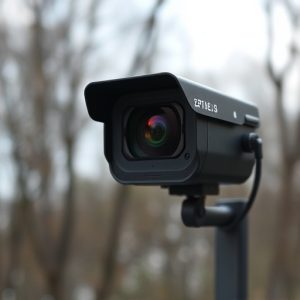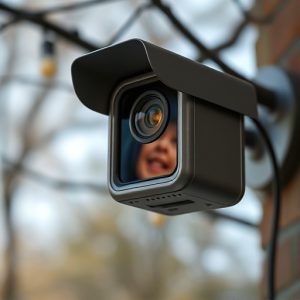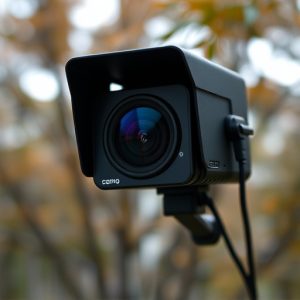Unveiling Hidden Cameras: Detection Tips for Bedrooms & Tech Tools
Small hidden cameras, advanced with HD video, night vision, and motion detection, offer discreet mon…….
Small hidden cameras, advanced with HD video, night vision, and motion detection, offer discreet monitoring solutions for bedrooms by blending into everyday objects like smoke detectors or light switches. Strategically place them behind mirrors, inside ceiling lights, under furniture, or in shadowed areas. Detect these devices using specialized tools that intercept wireless signals or analyze heat signatures, ensuring bedroom privacy through advanced techniques. In today's digital era, thermal imaging cameras and RF signal detectors help scan rooms for unusual heat signatures or transmissions. Responsible use requires understanding legal and ethical boundaries, with transparency and data security as key considerations.
Uncover the insidious world of small hidden cameras with our comprehensive guide. Learn how to protect your privacy by identifying potential locations in bedrooms, understanding advanced detection techniques, and utilizing modern technology like apps and tools. We’ll also delve into legal considerations and ethical use of these devices. Stay ahead of potential threats and safeguard your personal spaces from unwanted surveillance.
- Understanding Small Hidden Cameras: A Brief Overview
- Identifying Potential Locations for Hidden Cameras in Bedrooms
- Advanced Techniques to Detect Hidden Camera Signals
- Utilizing Technology: Apps and Tools for Detection
- Legal Considerations and Ethical Use of Hidden Monitoring Devices
Understanding Small Hidden Cameras: A Brief Overview
Small hidden cameras, often referred to as spy cameras or surveillance devices, have evolved to become increasingly sophisticated and compact. These miniature cameras are designed to blend seamlessly into everyday objects, making them an attractive option for those seeking discreet monitoring solutions. In the context of a bedroom, small hidden cameras can be disguised as common items like smoke detectors, light switches, or even decorative items, providing a sense of security and privacy for individuals concerned about their personal spaces.
The rise in technology has led to significant improvements in image quality, resolution, and recording capabilities of these devices. Many modern small hidden cameras offer HD video footage, night vision capabilities, and motion detection features, ensuring that users receive clear and concise alerts when suspicious activity is detected within the bedroom environment. With their compact size and versatile placements, these cameras offer a level of peace of mind for homeowners seeking to protect their private sanctuary.
Identifying Potential Locations for Hidden Cameras in Bedrooms
When it comes to identifying potential locations for small hidden cameras in bedrooms, it’s essential to think like a thief. These devices are often strategically placed to capture sensitive moments without detection. Common spots include behind mirrors, inside ceiling lights, and under furniture. Keep an eye out for any unusual or poorly placed fixtures; these could be red flags indicating the presence of a hidden camera.
Additionally, consider the blind spots in your bedroom where shadows are prevalent. Cameras love these areas as they offer cover from direct light. Wall-mounted TVs or art pieces that obscure certain sections of the room can also serve as hiding places. Regularly checking and re-evaluating these potential locations will help keep you one step ahead when it comes to detecting small hidden cameras for bedroom surveillance.
Advanced Techniques to Detect Hidden Camera Signals
Detecting small hidden cameras, often referred to as spy cameras, in a bedroom or any space presents a unique challenge due to their discreet nature. Advanced techniques are required to uncover these clandestine devices, ensuring privacy and security. One effective method involves using specialized detection tools that can intercept and analyze wireless signals. These tools can detect the presence of hidden cameras by identifying unique frequency ranges used by various types of spy equipment.
Additionally, employing infrared (IR) technology can be a powerful strategy. IR sensors can pick up heat signatures that may indicate the presence of active cameras, especially in dark or enclosed areas. With the right equipment, professionals can scan rooms for subtle variations in temperature, potentially revealing hidden camera lenses. This method is particularly useful when combined with visual inspections and digital forensics techniques to confirm the exact location of small hidden cameras for bedroom surveillance.
Utilizing Technology: Apps and Tools for Detection
In today’s digital age, technology offers powerful allies in the quest to detect hidden monitoring devices, especially those designed as small hidden cameras for bedroom spaces. There are numerous apps and tools available that can assist in this process. For instance, thermal imaging cameras can help identify heat signatures indicative of covert recording devices. These innovative tools allow users to scan rooms, furniture, and even walls for any unusual activity or hidden components.
Additionally, there are mobile applications that act as signal detectors, designed to pick up on wireless transmissions from small hidden cameras. These apps utilize radio frequency (RF) detection capabilities to identify potential surveillance equipment. By scanning through various frequencies, users can pinpoint the presence of hidden cameras and take appropriate measures to secure their personal spaces.
Legal Considerations and Ethical Use of Hidden Monitoring Devices
When using small hidden cameras, such as those designed for bedroom monitoring, it’s crucial to understand and adhere to legal considerations and ethical guidelines. The legality of hidden camera use varies significantly by jurisdiction. In many countries, there are strict regulations regarding privacy rights and surveillance. For instance, some regions require explicit consent from all parties being recorded, while others have specific restrictions on where cameras can be placed within a home.
Ethically, the use of hidden monitoring devices should be approached with sensitivity and transparency. Installing a small hidden camera in a bedroom raises questions about individual privacy and trust. It’s essential to consider the purpose behind the surveillance—is it for security, parental control, or another valid reason? The ethical use of such devices involves informing all affected parties (or their legal guardians) and ensuring that recorded data is handled securely and discreetly.
Hidden monitoring devices, particularly small hidden cameras in bedrooms, raise significant privacy concerns. While there are advanced techniques and tools like signal detection apps and specialized equipment to help identify these devices, it’s crucial to approach their use ethically and within legal boundaries. Understanding the potential locations and evolving technologies associated with small hidden cameras is the first step towards protecting your privacy. Remember that prevention, through regular checks and awareness, remains the best defense against these invasive devices.


